
How I Stay on Top of my To-Do List
File this blog post under the “things I get asked quite a big so I should probably write a blog post about it?” category. This time I’m answering my second-most asked question — which usually comes up after people realize that I work a full-time job on top of my DIYing, blogging, and general momming — and that is “How do you stay on top of your to-do list?”
While I may not be a professional planner, I’ve worked as an executive administrative assistant for about 15 years juggling ever-changing calendars, travel, and to-dos so my natural multi-tasking and prioritizing skills have to be super sharp to keep the ship afloat. Over time I’ve learned to bring those skills into my personal life and have really been able to hone what works best to keep the schedule for my busy life outside of work run just as smooth. The biggest difference which needs to be noted before we go further — at work everything I do is digital, but at home I use a paper planner and that’s where the advice I give in the rest of this post will come from. Unless I’m in front of a screen at all times online planners just don’t work for me — I remember things better when I physically write them down and I find it much easier to jot a note then add something in an app — but if they work for you then don’t change things just because I’m a fan of old school pen and paper.

Before I take you through my scheduling process — I want to first give a few general tips that have made the difference in how I tackle both my large and small to-do lists. As always, take what you need from the advice I’m offering and play around with it until it fits best with your lifestyle.
- The Goal is to Stress Less, Not More — It may sound counterproductive, but the main reason that I keep such a tight eye on my to-do list and schedule is because it actually lets me be more flexible with my time. When I prioritize my actions day-to-day, I’m able to see where my busy days are and where I can take things a little easier. I’m also able to move lower priority things around when I need a night off or when something else comes up and not stress because I didn’t fail to get that thing done, I just moved it to another day.
- Break down larger To-Do Lists into smaller parts — For me my biggest To-Do Lists are things that I need to do around my house for my DIY projects, but take this advice in whatever way you need to…..do not try to tackle your To-Dos from one giant list. It’ll be very difficult to feel like you’re accomplishing anything on a list that just keeps growing and it’s the easiest way to feel overwhelmed before you even start. Instead, take that big list and break it down — by month, by week, by day — and only focus on a few smaller chunks at a time.
- Write Everything Down — I have a really good memory and could probably keep most of my schedule in my head if pressed….but just because I can do it doesn’t mean that it’s good for me. Because you know what happens? My brain turns into a checklist that I am constantly going over and over and over…which is just as stressful as it sounds. Once I write something down, though, I can release it and focus on being in the moment of whatever I’m doing.
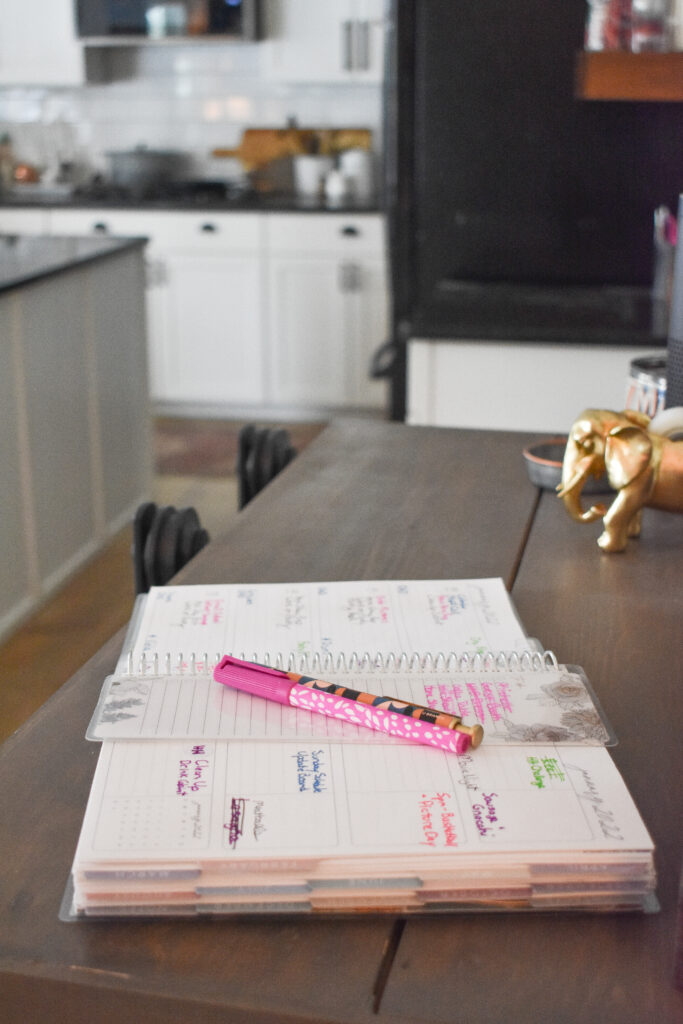
- Don’t Rush to Buy an Expensive Planner — For the last few years I’ve used the Erin Condren Life Planner because it gives me every the exact functionality that I need in my day-to-day life, but before I committed to a pricier planner I started with a plain notebook and used that to figure out what worked best for me. Some of the options you may want to consider are do you need a monthly, weekly, daily view of your schedule? Do you need extra space for lots of notes or to-do lists? Do you want things like journaling, goal tracking, or meal planning to be a part of your planner?
- Keep your schedule out in the Open — My planner almost always lives on the command center in the middle of my kitchen and is always open. I go through it in the morning to see what my priorities are for the day, and then every time I walk past I’ll take a quick peak to see how I am doing with my other actions and cross off what I’ve gotten done.
- Practice Practice Practice — Just like anything else, organization and planning are skills that take practice to master so if this hasn’t been a big part of your life before don’t get discouraged if it takes a while to get the hang of it, especially because you are also taking on the commitment of completely the tasks that you are setting for yourself each day which also takes practice.
Now Let’s Break it down……
Every Sunday night I sit down with my planner and put aside a chunk of time to plan out my week I color-coded all the different sections to make them easier to see, but honestly I usually just keeps things easy with my ballpoint pen and maybe a sticker if I’m in the mood. As the days go by more things almost certainly get added but starting out each Monday with a very clear picture of the week ahead is one thing that has really helped me ease the Sunday night anxiety that can keep me up at night.
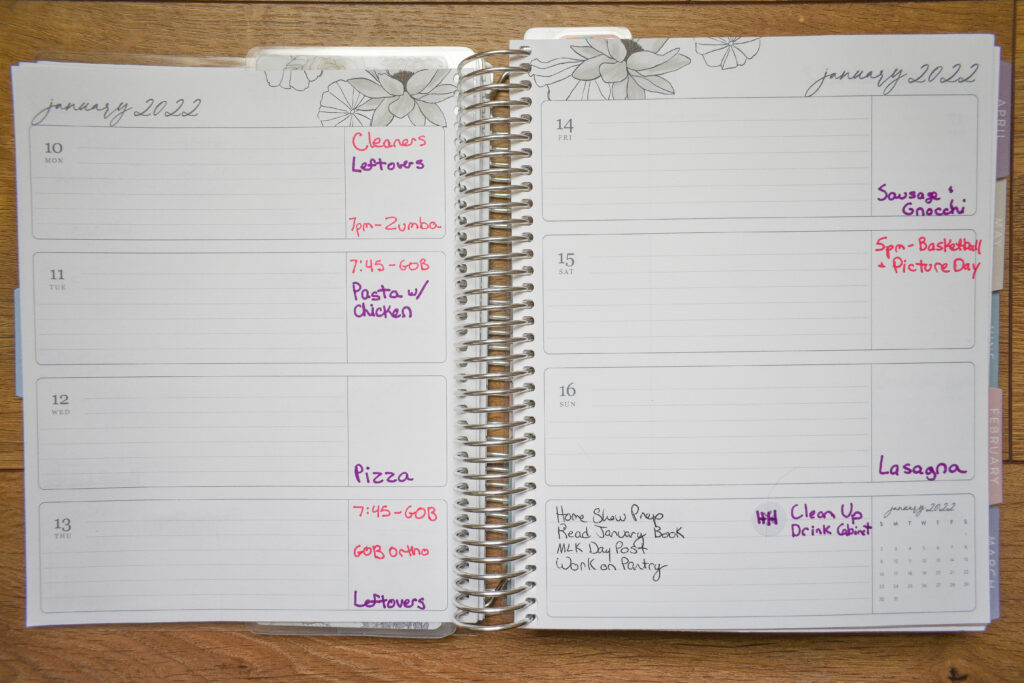
- First, I make note of any to-dos left over from the week before and any want-to-dos I’m planning on keeping in mind for the upcoming week; I also make note of my weekly Hilltown House Challenge item to check off
- I start my planning process with any appointments, deadlines, and anything that is confirmed for the upcoming week
- Getting those down first also helps me meal plan my dinners for the week and plan my grocery list too
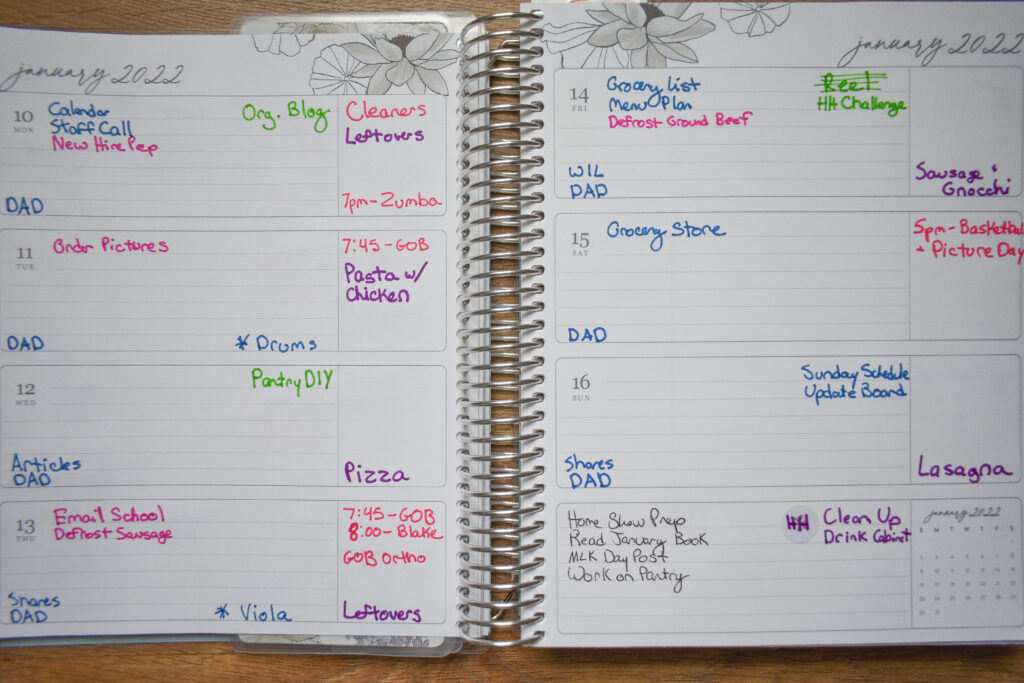
- After that, I add the routine tasks that I keep in mind each week which are both for myself or for my boys
- Next comes any priority to-dos for each day; these are also the items that I try to get done ASAP each day so I can move onto to fun stuff
- This is a little inside the actors studio — but I also take note of any Instagram or blog posts I plan on publishing each week. Any thing that takes time is worth making note of and keeping in mind as you’re evaluating your bandwidth.
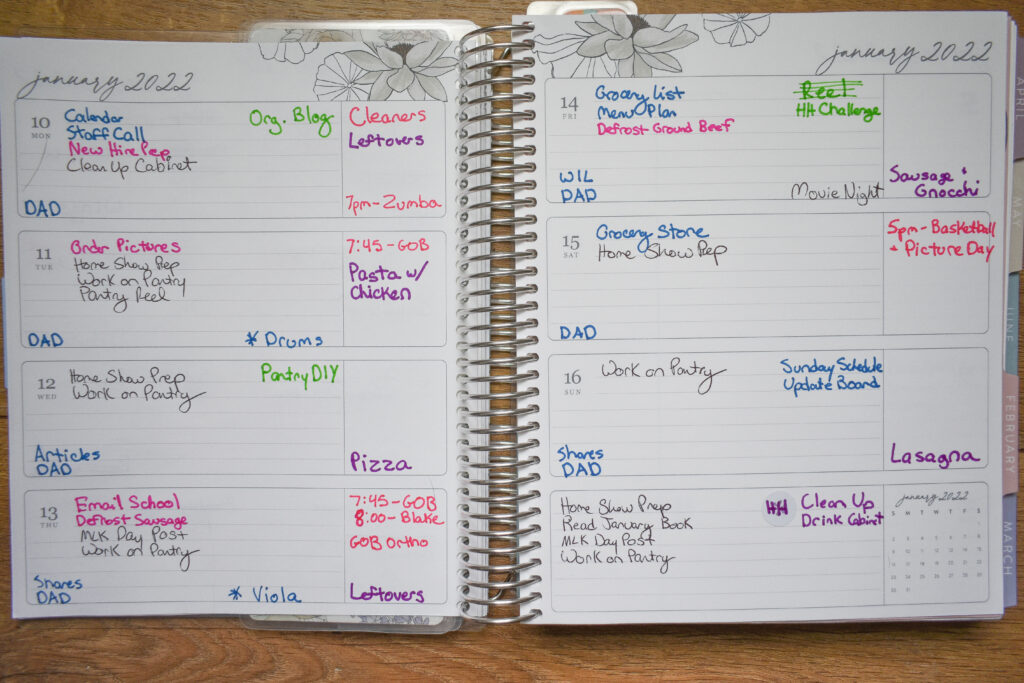
- Lastly – I fill in my days with those “nice-to-dos” that I mentioned earlier. After all of these steps, I have a really good idea of how busy each day is going to be btw. my day job, my need-to-dos, and my family’s appointments that I can finally plug in everything else that I want to do in terms of DIY or hanging out with my boys or even any shopping trips I’m trying to squeeze in. Usually these are the items that are most fluid on my calendar and may jump from day to day or ever carry over into the following week.
Oh – and just in case you’re wondering my planner NEVER looks this neat either at the beginning of the week or the end. I used my best handwriting for you all, but this is what things usually look like when its’ all said and done.
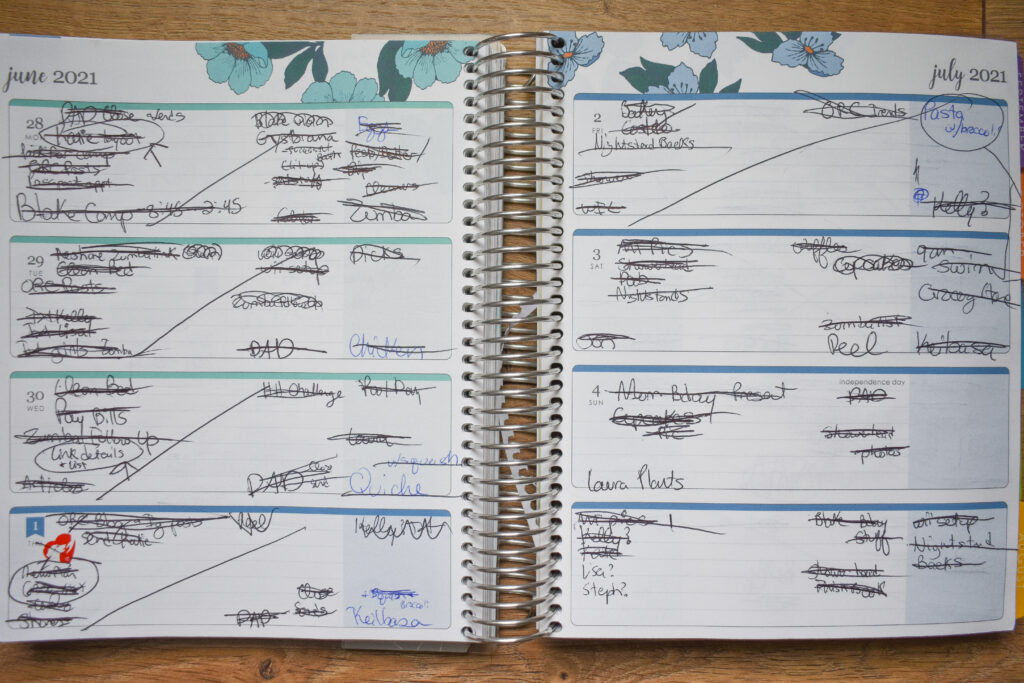
Just like my “Tips for an Instagram Ready Home” post I wrote last year, I want to include one caveat before I wrap things up….when it comes to planning and scheduling there is a pendulum btw. structured and unstructured and everyone will function their best at different spots on that spectrum. The advice I’m giving in this post today is for anyone who feels like they may need some helping getting closer to that structured side of the scale, but I also wanna stress the importance being honest with yourself about what that right balance feels like for you and not comparing yourself to anyone else.


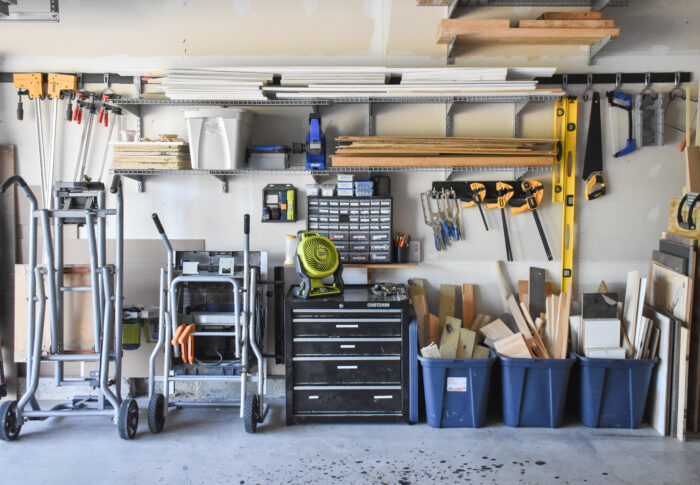
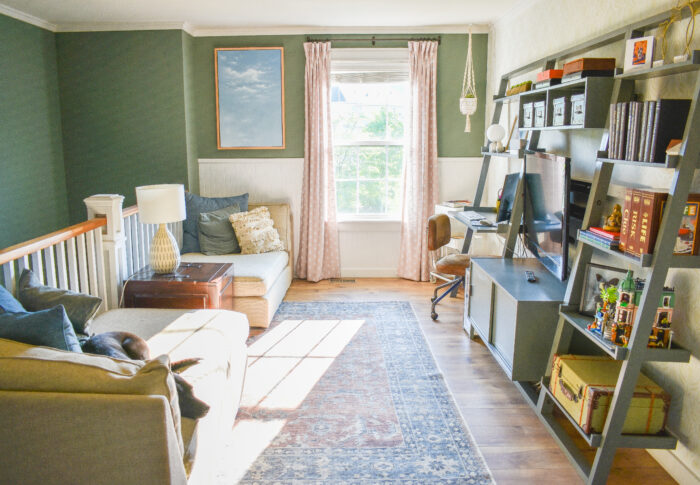
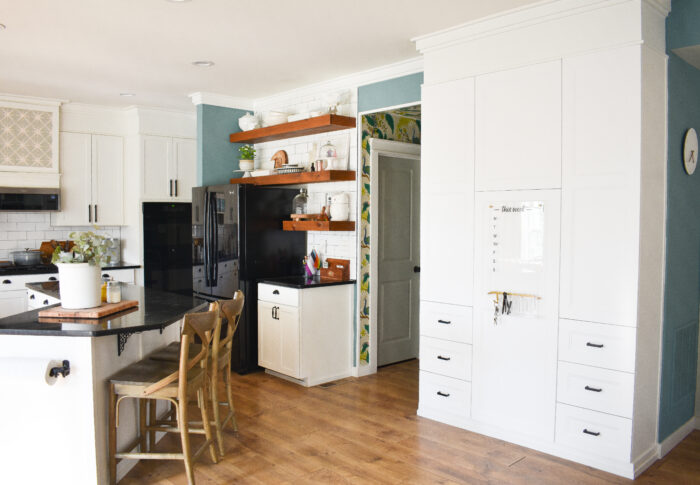
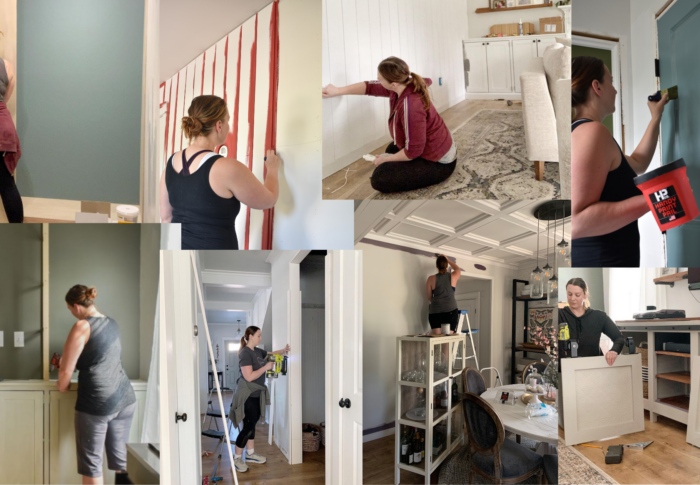
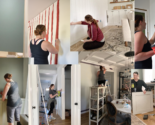

-
-
1 year
Tagged better homes and gardens, garage, garage organization, organization